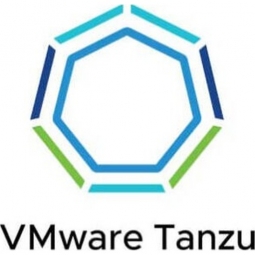
Technology Category
- Infrastructure as a Service (IaaS) - Cloud Middleware & Microservices
The Customer
About The Customer
EMC is a global leader in enabling businesses and service providers to transform their operations and deliver information-technology-as-a- service (ITaaS). Fundamental to this transformation is cloud computing. Through innovative products and services, EM
The Challenge
Quickly Developing Licensing Applications to Improve the Product Licensing Process
Today, EMC has a huge and varied technology portfolio with approximately 80 different product lines with multiple products in each. Additionally, products are sold to different market segments and different market types. This creates a significant challenge as multiple licensing algorithms and schemes are required to support EMC’s broad portfolio of products.
According to Brian Walsh, Architect for Licensing Applications, EMC IT, the company is always adjusting the way it delivers products to meet market changes, and it needs to be able to support quickly changing licensing schemes, how products consume licenses, as well as the whole lifecycle of license management.
“We have to be able to react very quickly and support a global customer base,” says Walsh. “We need a platform that allows us to rapidly build licensing applications to support the complete lifecycle of licensing agreements that EMC has with customers.”
The Solution
In 2014, EMC decided to invest in what is known internally as the Transformational eLicensing Solution initiative (TeS). EMC was challenged with determining the best way to design a solution that would support the rapidly changing licensing demands of the product portfolio. The team initially considered a microservices approach that would require building up, maintaining and orchestrating several virtual machines and other related components. But after exploring Pivotal Cloud Foundry, they quickly recognized that it would be a good platform choice from a development perspective because it abstracted the underlying virtual infrastructure and provided the full lifecycle management, elasticity and scalability the service required. Pivotal Cloud Foundry, coupled with a microservices architecture, provides a symbiotic relationship that not only meets EMC’s immediate needs but is also foundational for supporting future business needs such as building a product licensing portal and supporting a broad diversity of client and consumer interfaces.
“With Pivotal Cloud Foundry as a Cloud Native Platform, being able to deliver systems quickly offers huge benefits for us,” says Walsh. “And enabling us to use a microservices- based approach gives us even more benefits.”
The microservices approach offers many advantages over a typical monolithic approach as it allows a developer to really focus on creating small self-contained components with specific functionality and then test, deploy, and scale each independently. This is very different from creating a small piece of a much larger application and then having to go through many layers to fix bugs or add logic.
The team began using Pivotal Cloud Foundry in spring 2014, and started building its first microservices in August of that year. The first components were delivered to production in March 2015, and approximately 35 microservices will be available by August 2015. One service under development is a new responsive web-based customer portal that the team plans to launch in summer 2015. The portal will use a Representational State Transfer (RESTful) architectural design delivered using microservices. The objective is to build endpoints that will enable more EMC products to consume licensing information and interact with the licensing system from the product.
“With Pivotal Cloud Foundry as a Cloud Native Platform, being able to deliver systems quickly offers huge benefits for us,” says Walsh. “And enabling us to use a microservices- based approach gives us even more benefits.”
The microservices approach offers many advantages over a typical monolithic approach as it allows a developer to really focus on creating small self-contained components with specific functionality and then test, deploy, and scale each independently. This is very different from creating a small piece of a much larger application and then having to go through many layers to fix bugs or add logic.
The team began using Pivotal Cloud Foundry in spring 2014, and started building its first microservices in August of that year. The first components were delivered to production in March 2015, and approximately 35 microservices will be available by August 2015. One service under development is a new responsive web-based customer portal that the team plans to launch in summer 2015. The portal will use a Representational State Transfer (RESTful) architectural design delivered using microservices. The objective is to build endpoints that will enable more EMC products to consume licensing information and interact with the licensing system from the product.
Operational Impact

Case Study missing?
Start adding your own!
Register with your work email and create a new case study profile for your business.







